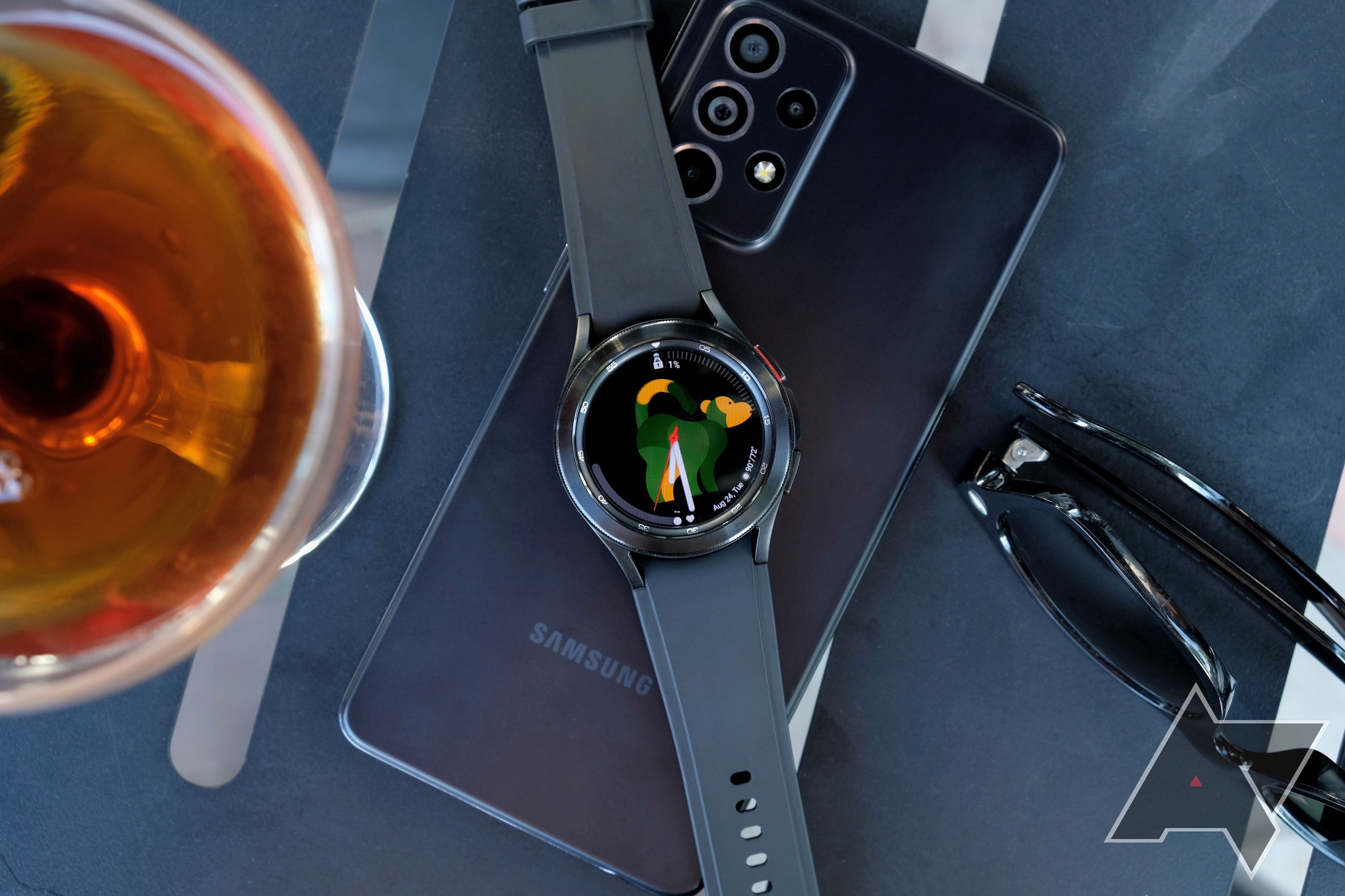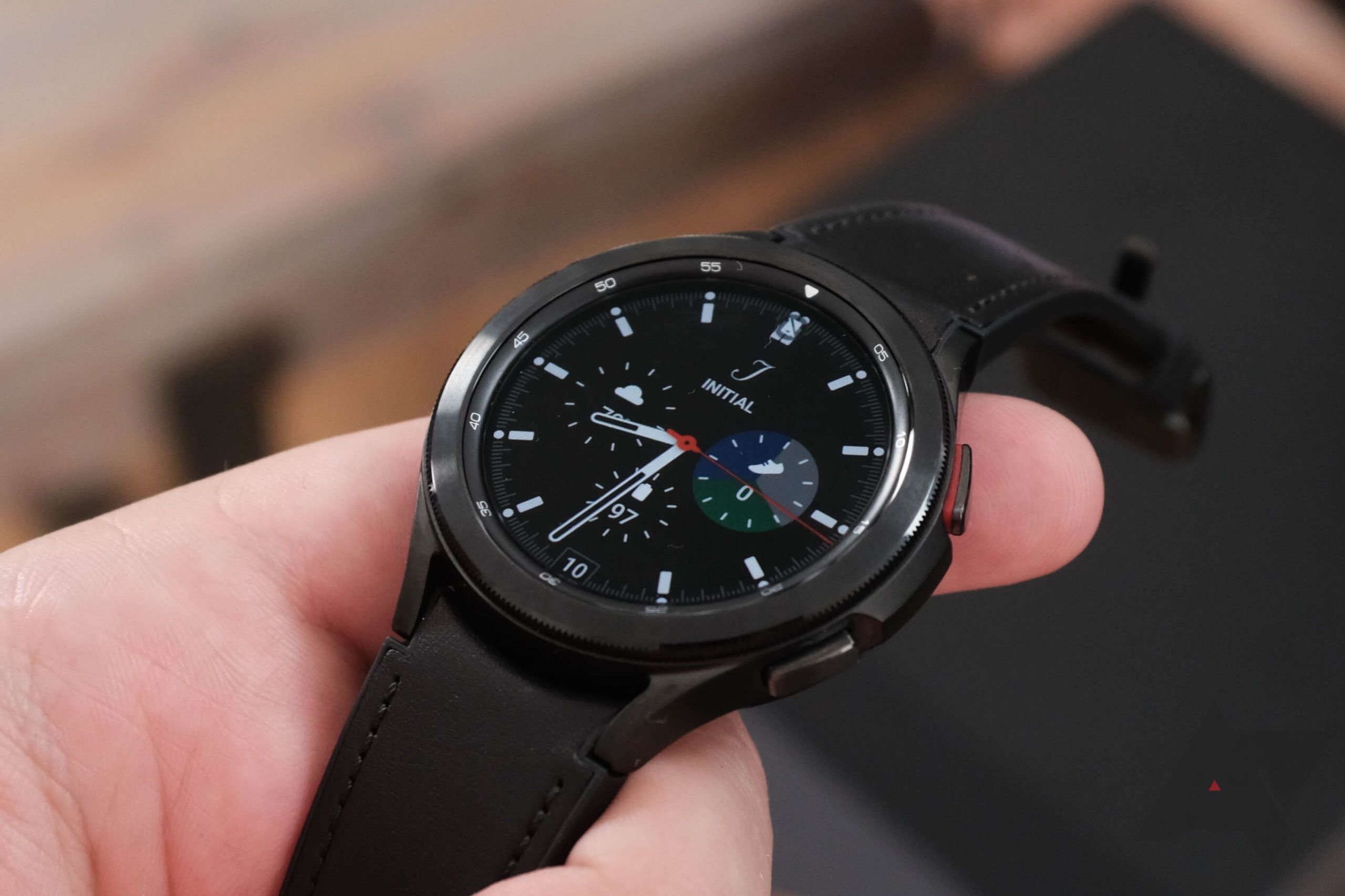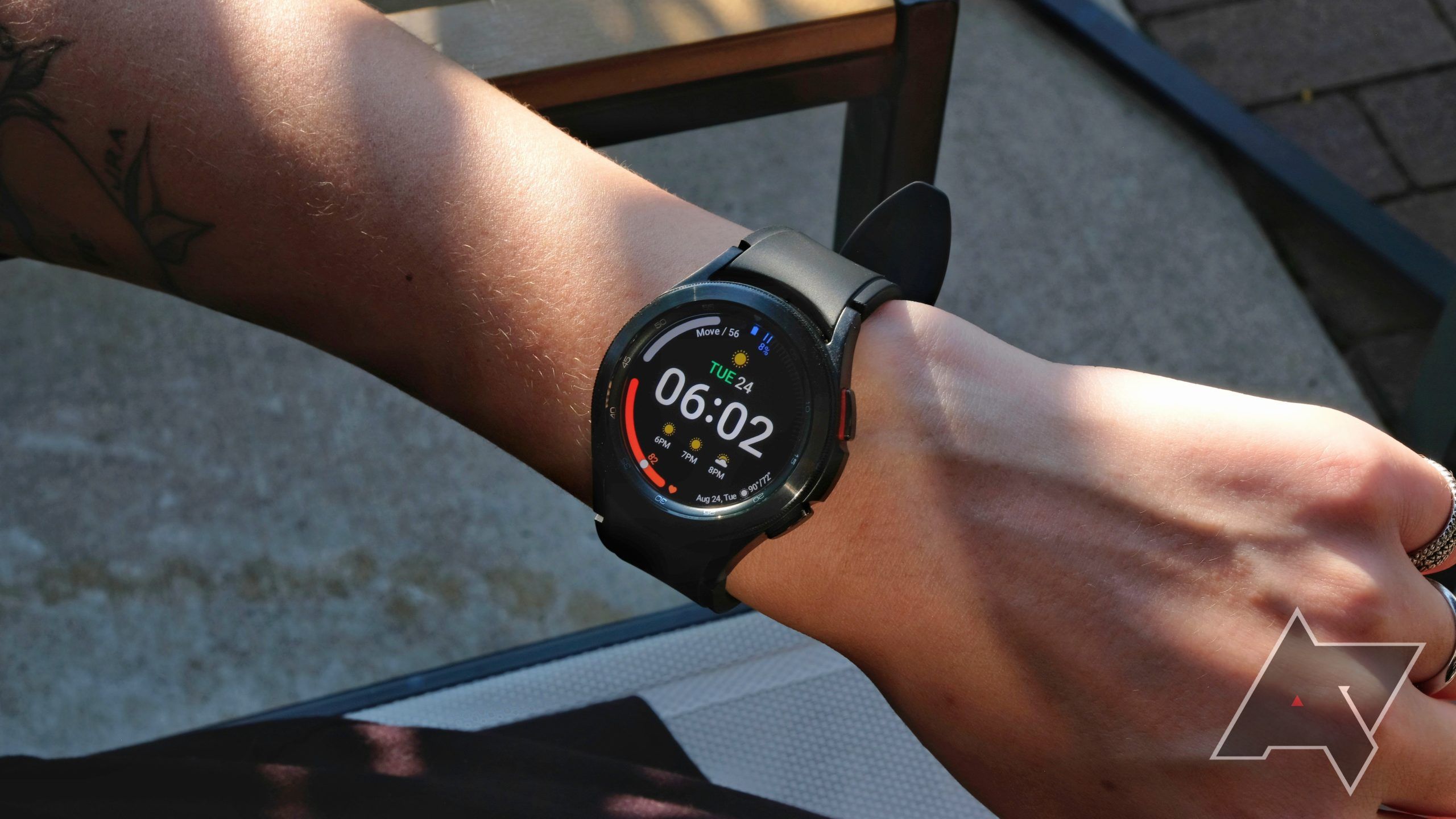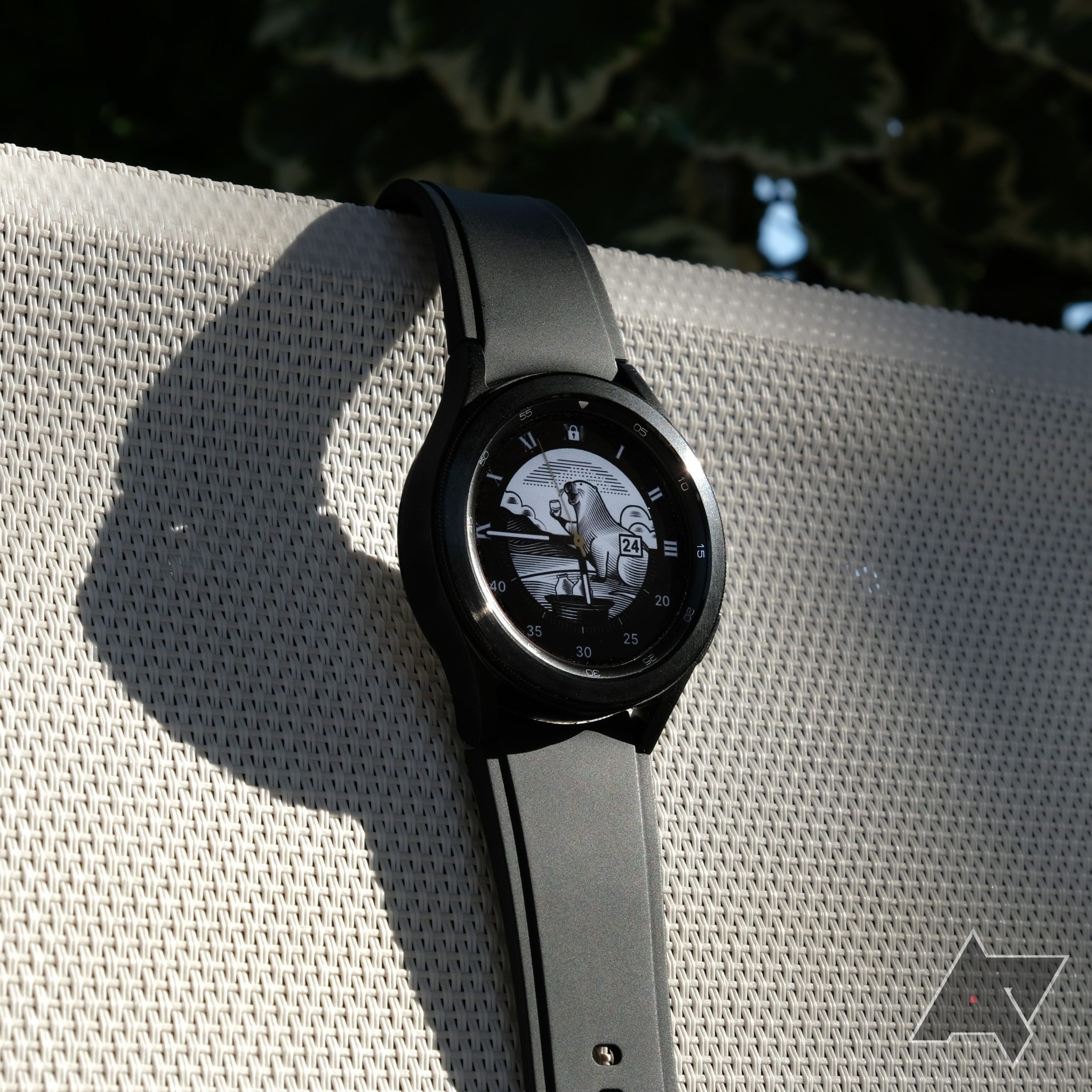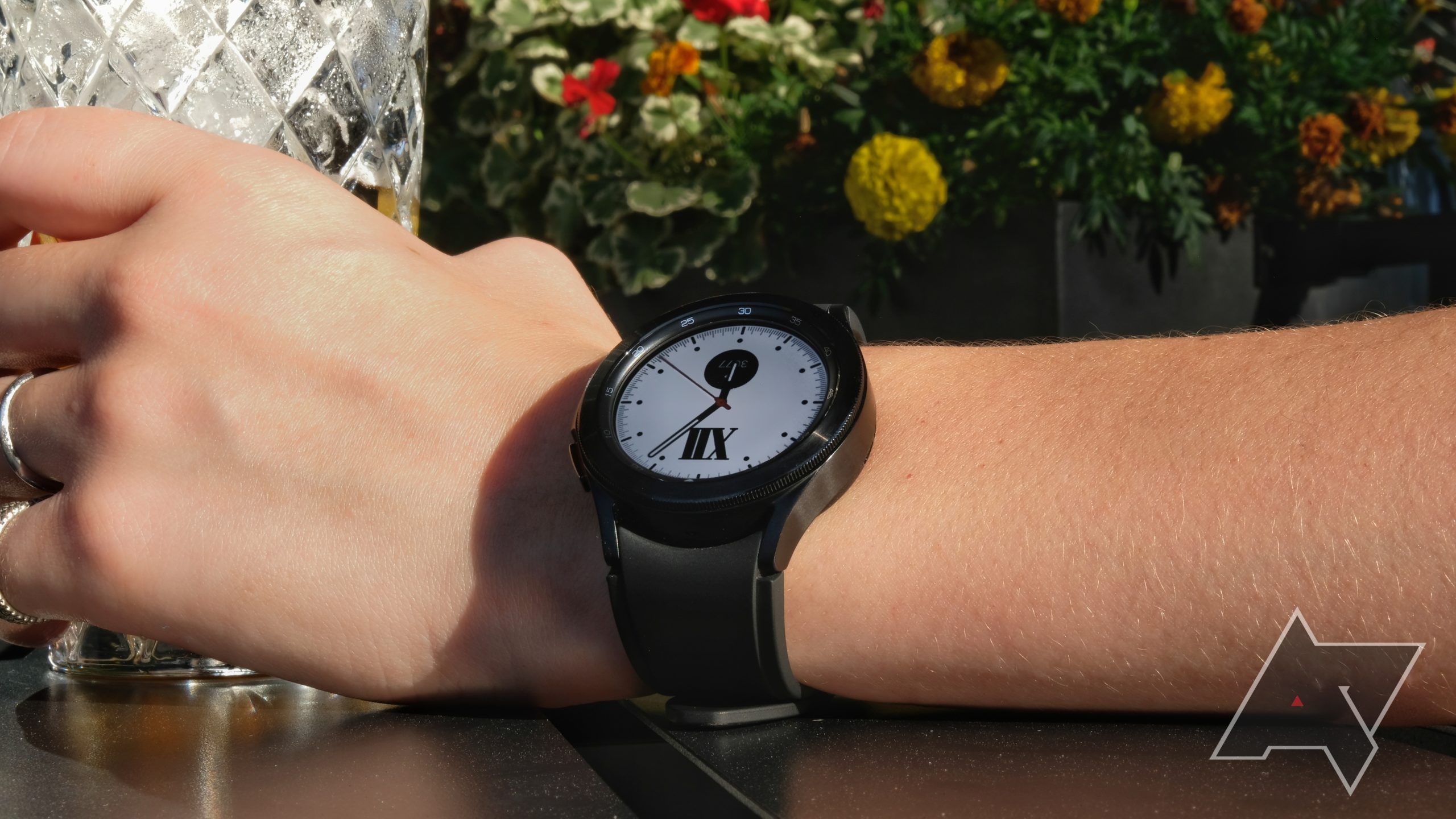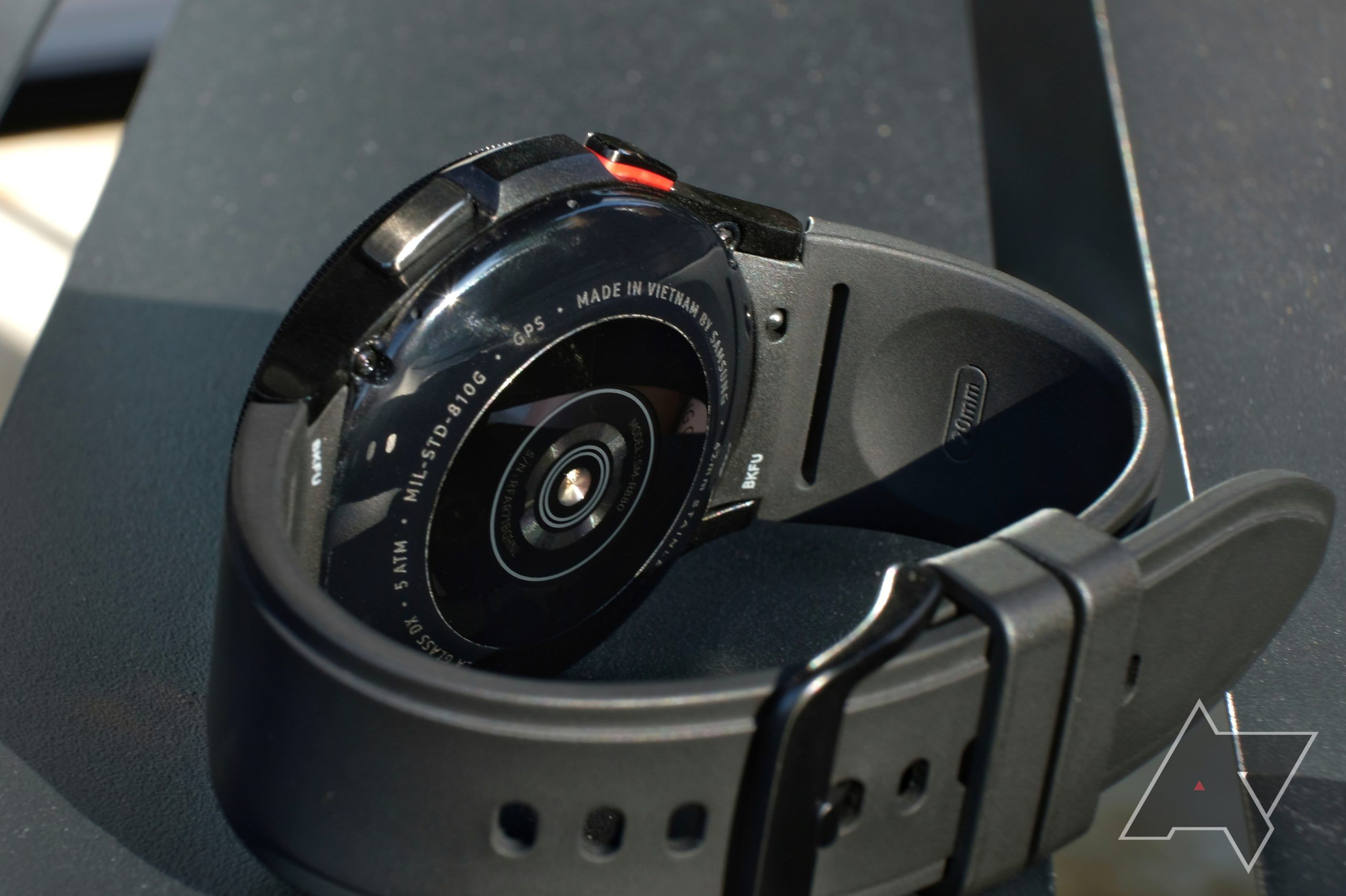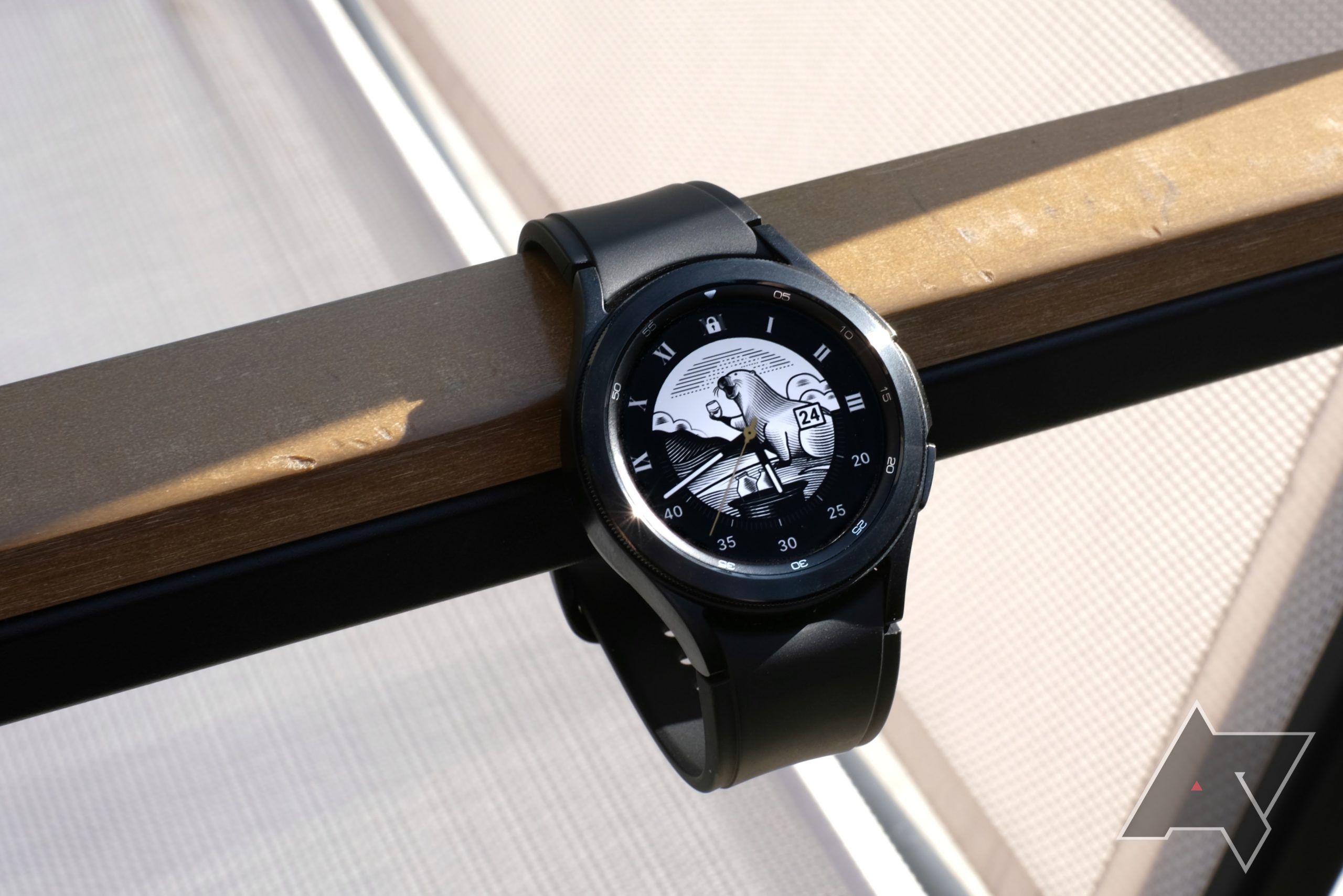Read update
- Long-term impressions
Released in Summer 2021, the Galaxy Watch4 and Galaxy Watch4 Classic are the first watches to run the revamped Wear OS 3. After a slightly shaky release window, Samsung’s made good on its promises to add once-missing features like the Google Assistant through updates. Nearly a year after launch, I’m still regularly using the thing — and thanks in part to Samsung keeping its word, I still love it.
Samsung Galaxy Watch 4 Classic
With smooth performance, a great display, sturdy build quality, and a physical rotating bezel for navigating menus, the Samsung Galaxy Watch4 Classic is one of the best smartwatches you can buy today. It does require installing a couple of Samsung apps on your phone, though.
- Display: 60Hz OLED, 1.2" 396x396 (42mm) or 1.4"450x450 (46mm)
- CPU: Exynos W920
- RAM: 1.5GB
- Storage: 16GB
- Battery: 247mAh (42mm) or 361mAh (46mm)
- Connectivity: NFC, GPS, Bluetooth 5.0, Wi-Fi 802.11 a/b/g/n, LTE (optional)
- Durability: IP68 certified, MIL-STD-810G compliant
- Software: Wear OS 4/One UI 5 Watch
- Health sensors: Heart rate, EKG, bioelectrical impedance
- Price: From $350
- Weight: 46.5g (42mm), 52g (46mm)
- Snappy performance.
- Pixel-dense, bright, 60Hz display.
- Great build quality, including that clicky rotating bezel.
- Smaller model manages just over 24 hours of battery life on a charge.
- Requires Samsung apps on your phone.
- A $100 upcharge over the base-model Watch4 is steep.
Design, hardware, what's in the box
The Watch4 Classic is hardly a radical departure from older Samsung wearables: it's a pretty traditional-looking watch with two buttons on the right edge and that familiar and well-loved rotating bezel framing its display. Its case is stainless steel (fancy!), and it comes in two sizes: 42 millimeters with a 1.2-inch screen, or 46 millimeters with a 1.4-inch screen.
Both sizes come in a Wi-Fi/Bluetooth version as well as an LTE-connected variety, and each is available in either black or silver. The standard Watch4 also comes in pink or green, so it would've been nice to see more color options here, too — this thing would look great in a bronze finish with a green band.
The rotating bezel is sort of the Watch4 Classic's whole gimmick. That, along with its more conservative styling and steel construction, is what makes it Classic as opposed to the normal Watch4, which is smaller, sleeker, made of aluminum, and bereft of a physical rotating bezel (its bezel is touch-sensitive to mimic the functionality, but that's just not the same). I'm still not entirely convinced those upgrades are worth the hefty $100 upcharge, but I would definitely miss the bezel after getting used to it. Its rotation comes with a delicate mechanical clicking that sounds like a tiny socket wrench, and it's just so satisfying. (We’ve heard that there might not be any Galaxy Watch5 model with a similar rotating bezel, and I’m personally pretty sad about it.)
Far and away my favorite watch face on the Watch4 Classic.
More importantly, though, the screen inside that bezel is utterly great. The 42-millimeter model I’ve got has a 1.2-inch OLED display with a resolution of 396 by 396, and it's got great viewing angles and vibrant colors. It also gets plenty bright enough to see in even the harshest sunlight, and its 60Hz refresh rate looks excellent next to all the watches that are stuck at 30.
I'm not crazy about large watches, and as a man with what I'd call normal-size wrists (that's not my arm in the photos), I find the smaller Watch4 Classic and the included small/medium band to be very comfortable — although I'm within a couple notches of needing a medium/large, which isn't included with the smaller watch. Bands attach by standard spring pins, though, so any 20-millimeter band you may have around ought to slot right in without much hassle.
The watch can be used to take hands-free calls, and while I can see that being helpful in a pinch, in practice, it feels pretty awkward. I’ve found myself using the mic almost exclusively to talk to the Google Assistant.
In the box, there's the watch, its band, some literature, and a little five-watt magnetic charger.
Software, performance, and battery life
The Watch4 and Watch4 Classic may have gotten first crack at Google’s Wear OS 3, but the experience here is still thoroughly Samsung. The software on the whole looks and behaves a lot like Samsung's old Tizen watch interface, but being Wear OS under One UI confers the benefit of full Play Store access. I'm personally more familiar with Wear OS than I am Tizen, but I had no trouble adjusting.
Navigating the Wear-Tizen hybrid shouldn't be too difficult for anybody who's used either OS. Notifications live to the left of your home screen; quick settings above; app drawer below; and app tiles to the right. Twisting the bezel counterclockwise from the home screen will scroll through notifications, and clockwise, tiles. In views with vertically scrolling content, clockwise twists scroll down and vice versa. The bezel is an intuitive (and even fun) way to get around the watch, but it does occasionally become unresponsive, and I could never figure out why. Still, that probably happens to me less than once a day and it never fails to resolve itself within a few seconds, so it's only an issue in the academic sense.
Play Store access means the apps you're used to from other Wear OS watches are available here — including big gets from Google like Fit, Maps, and Keep. The Watch4 series even got a YouTube Music app before other Wear OS devices.
While the Watch4 and Watch4 Classic launched without access to the Google Assistant and with a Google Pay app that was only partially functional, both of those deficiencies have been corrected in the months since. You have the option to map a double-tap of the power button to open Pay, and with the Assistant app installed, you can set the Google Assistant to respond to hey Google, a long-press on the power button, or both.
The Google Assistant experience on the Watch4 series is still a little rough around the edges, with hotword detection dealing a major blow to battery life. Summoning the Assistant by voice can also cause it to lock up, necessitating fiddling with the Galaxy Wearable app on your phone. I’d suggest sticking with the button-press method for the time being — it’s marginally less convenient, but considerably more functional.
A lot of the built-in watch faces are really fun; my favorite features a line drawing of a happy little otter. They're also customizable: practically all of them have multiple themes and color options, and most complications (the tiny little widgets that show stuff like your step count or the weather) can be swapped out to better suit your needs.
On a fundamental level, the Watch4 Classic is good at regular smartwatch stuff. It delivers notifications, of course, and it'll track your activity, your sleep (including overnight blood oxygen saturation), and even your body composition by way of bioelectrical impedance sensors embedded in its two buttons (my readings there were consistent with what my Fitbit scale reports, for what that's worth). By default, it only takes your pulse once every 10 minutes, but there's also a continuous setting, if you don't mind the battery hit.
Normal watch stuff is managed through the Galaxy Wearable app.
You can technically take an EKG scan using either Watch4 model, too, but for reasons I can't begin to guess, doing so currently requires the watch be paired with a Samsung-branded phone. While activity tracking, sleep tracking, and body comp data are all stored in Samsung Health, which you can install on any old Android device, EKGs require the Samsung Health Monitor app, which is only available through the Galaxy Store. The hardware is also capable of measuring blood pressure, but that functionality isn't available in the US. I'm not personally bothered by any of this, and there are workarounds, but the limitations are still goofy and could reasonably turn off potential buyers who don't own Samsung phones.
There's a Samsung-built Exynos W920 chipset inside every Watch4 model, paired with a luxurious gig and a half of RAM. Those comparatively beefy specs driving the Watch4 Classic's lovely 60Hz display make for an incredibly smooth smartwatch experience. Even on well-appointed traditional Wear OS watches, the UI can frequently feel a little stiff — but I'm yet to experience that with the Watch4 Classic. Tooling around the UI, opening apps, and even replying to texts with a postage stamp-size T9 keypad all feels quick in a way I'm not used to on older Android watches. If performance here is predictive of how Wear OS devices as a whole will feel going forward, I'm sincerely excited.
You can use Google Fit for activity tracking, but sleep and body composition data require Samsung Health.
You can expect the Watch4 Classic to last you about one full day on a charge with the always-on display active — the smaller model, at least. Samsung talks up 40-hour battery life on these watches, and while that might be feasible on the 46-millimeter version, the 42-millimeter, with its tiny 247 milliamp-hour cell, regularly conks out right around 24 hours for me. That's fine, but it's also 40 percent shy of Samsung's advertised figure, and it doesn't inspire much confidence in the thing's longevity. That said, nearly a year into regularly wearing the watch, battery life hasn’t shifted enough to change my usage, if at all — though I do wish charging were faster than five watts. The watch’s tiny battery can take an hour or so to charge to 100 percent.
Should you buy it?
If you want a competent smartwatch for your Android phone and you have no compunction about dropping extra cash for nice-to-haves like that slick rotating bezel, yes. I think the non-Classic Watch4 is easier to recommend to more people; it's functionally identical to the Classic model and it costs $100 less. The Watch4 Classic's higher-end materials and bezel really do add value, though, and if you want the best and have the budget, it's a great option.
There's no denying Samsung's new watches work best with Samsung's own phones: EKGs are officially unavailable on phones from other manufacturers, and using services like Bixby, Samsung Health, and Samsung Pay on non-Samsung phones requires downloading additional apps. But using the Watch4 Classic with a Pixel 6, the Samsung-mandated concessions hardly bothered me, and the watch is so darn nice to use, they feel worth it.
At launch, my biggest complaint about the Watch4 series was the absence of core Google services in Pay and Assistant. They’re both here now — and while the latter is plenty flawed, it works well enough that I’m glad to have it.
Both the Watch4 and Watch4 Classic are among the best smartwatches available right now, and the Classic is the definitive version. If you’re buying a Wear OS watch today and you’ve got the cash, it should probably be this one.
Buy it if:
- You want a high-performing Android smartwatch and don't mind paying for it.
- You're already deep in Samsung's ecosystem. You'll be right at home.
Don't buy it if:
- You don't want to pay $100 extra for a nicer way to scroll. The standard Watch4 will be a better value for you.
- You hate Samsung’s software. Wait and see what the upcoming Pixel Watch is like.
UPDATE: 2022/07/01 09:47 EST BY TAYLOR KERNS
Long-term impressions
This review has been updated to be accurate as of July 2022.
FAQ
Q: How does the Samsung Galaxy Watch4 Classic compare to the Samsung Galaxy Watch4?
The Samsung Galaxy Watch4 Classic is actually the same as the Samsung Galaxy Watch4 in most ways. The two watches share all the same internal components, the same displays, and the same batteries.
The differences come in materials and styling. While the base-model Watch4's case is made of aluminum, the Watch Classic's is stainless steel. The Classic also has a physical rotating bezel for navigating menus — the non-Classic Watch4 mimics the functionality with a touch-sensitive area surrounding its screen. At MSRP, the Watch4 Classic costs $100 more than the standard Watch4.
Q: How does the Samsung Galaxy Watch4 Classic compare to the Mobvoi TicWatch Pro 3 Ultra GPS?
The Galaxy Watch4 Classic is running the newer Wear OS 3 software with customizations by Samsung. The TicWatch Pro 3 Ultra GPS still hasn't been updated to Wear OS 3 — it's got older software you'll be familiar with from other Wear devices. Mobvoi's said it should see Wear OS 3 sometime in 2022.
With Qualcomm's Snapdragon Wear 4100+ chipset and a full gigabyte of RAM, the TicWatch Pro 3 Ultra GPS should be nearly as quick as the Watch4 Classic in day-to-day use. The Mobvoi watch has better battery life, though, partially thanks to its unique dual-layer display. It can go two to three days on a charge, as opposed to the Watch4 Classic, which typically just makes it into a second day of use.
At an MSRP of $299, the TicWatch Pro 3 Ultra GPS is $50 less expensive than the Watch4 Classic.

